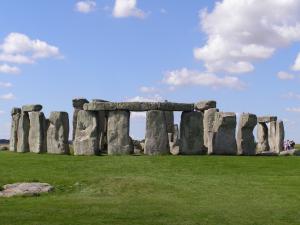Post
Sticks and Stones
19 October 2013
 Gareth Wiscombe
Gareth WiscombeWe typically think of telescopes as the tools of astronomy. While they are central to modern astronomy, telescopes are a relatively modern tool. We typically consider Galileo as the founder of telescopic astronomy in the early 1600s, but observational astronomy has a much longer history.
The oldest portable device that was clearly intended for astronomical observation is the Nebra sky disk. It was discovered in Germany in 1999, and is dated to 1600 BCE. By that time observational techniques had become relatively sophisticated. There are ancient observatories all over the world. Astronomy is something humans have done for about as long as we’ve been human.
Before telescopes, much of astronomy was focused on determining and predicting the positions of the Sun, Moon and planets. This requires not only sophisticated mathematics, but also precise measurements of their location in the sky at certain times. Often this was done by determining the position of the Sun or Moon at the horizon. The earliest known observatory capable of such measurements is the Goseck circle, dating to 4500 BCE. This consisted of a series of concentric ditches with wooden posts to determine positions. Less ancient (2400 BCE) but more famous is Stonehenge, which used stones and wooden posts to determine astronomical positions.
Over the centuries astronomical measurements became more sophisticated, but the need to measure positions and angles remained central to astronomy. The ancient Greeks developed the astrolabe around 200 BCE which in its early form consisted of a stick on a disk that could be pivoted to align with a star or planet.
In the 1200s, Maragheh observatory was constructed in what is modern Iran. It consisted of a circular stone building four-stories tall, and was the largest observatory of its day. In the 1400s the Beijing ancient observatory was built. Several bronze instruments built for the observatory in the 1600s are still there today. In the 1500s, European astronomers used large quadrants built against north-south aligned walls in order to make precise measurements of stellar positions. The most famous of these is Tycho’s mural quadrant.
For thousands of years the tools of astronomy were sticks and stones. Simple tools for making careful observations. Alignments and angles, motion and time. Only in the last four centuries did we add glass.
By then we knew very well how things moved in the sky. With glass we could finally start to understand why.